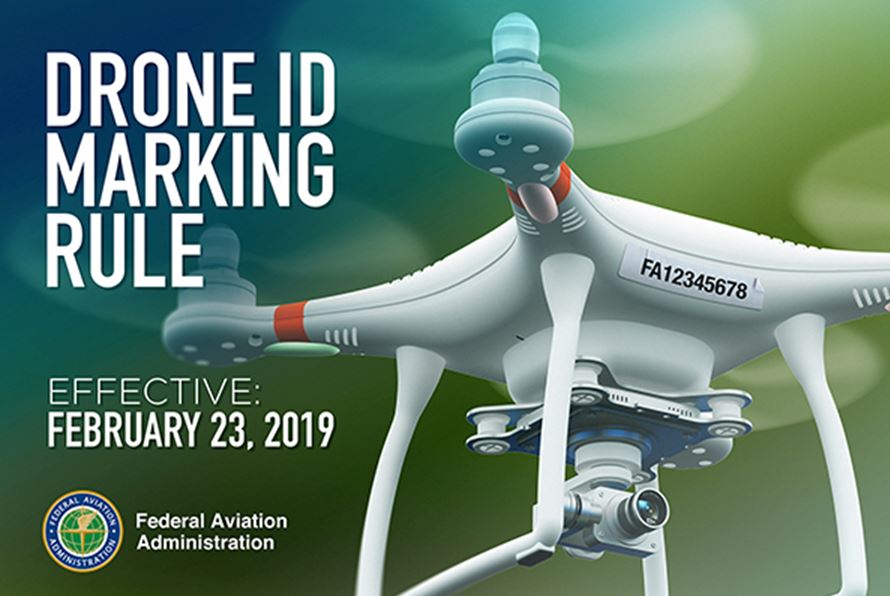For the past few months, the Federal Aviation Administration (FAA) has been hinting at the possibility that drone markings’ specifications will have to be modified in order to satisfy law enforcement concerns regarding visibility and accessibility to said markings. Today, the FAA finally published a rule in the Federal Register requiring small drone owners to display the FAA-issued registration number on an outside surface of the aircraft.
Owners and operators may no longer place or write registration numbers in an interior compartment. The rule is effective on February 23. The markings must be in place for any flight after that date. This interim final rule does not change the original acceptable methods of external marking, nor does it specify a particular external surface on which the registration number must be placed. The requirement is that it can be seen upon visual inspection of the aircraft’s exterior.When the FAA first required registration of small drones in 2015, the agency mandated that the registration marking should be readily accessible and maintained in readable condition. The rule granted some flexibility by permitting the marking to be placed in an enclosed compartment, such as a battery case, if it could be accessed without the use of tools.Subsequently, law enforcement officials and the FAA’s interagency security partners have expressed concerns about the risk a concealed explosive device might pose to first responders upon opening a compartment to find a drone’s registration number. The FAA believes this action will enhance safety and security by allowing a person to view the unique identifier directly without handling the drone.The FAA has issued this requirement as an Interim Final Rule -- a rule that takes effect while also inviting public comment. The FAA issues interim final rules when delaying implementation of the rule would be impractical, unnecessary, or contrary to the public interest. In this case, the agency has determined the importance of mitigating the risk to first responders outweighs the minimal inconvenience this change may impose on small drone owners and justifies implementation without a prior public comment period.The FAA will consider comments from the public on this Interim Final Rule, and will then review any submissions to determine if the provisions of the ultimate Final Rule should be changed. The 30-day comment period will end on March 15, 2019. To submit comments, go to http://www.regulations.gov and search for “RIN 2120-AL32.”As Transportation Secretary Elaine Chao announced last month, today the FAA also posted proposed new rules to let drones fly routinely at night and over people, and to further integrate them safely into the nation’s airspace. The comment period for these proposals begins tomorrow and will end April 15.All these movements around drone rules and extensions to the original Part 107 seem to indicate that the regulator is preparing the industry for a more comprehensive set of laws that would allow for the full integration of manned and unmanned aircraft in controlled airspace. We are still a few years away from full integration but the steady pace of changes and relaxation of certain regulations in Europe and the USA is a welcome development.Subscribe
The information you submit will be stored and used to communicate with you about your interest in Commercial UAV News. To understand more about how we use and store information, please refer to our privacy policy.
February 13, 2019
FAA Makes Major Drone ID Marking Change















Comments